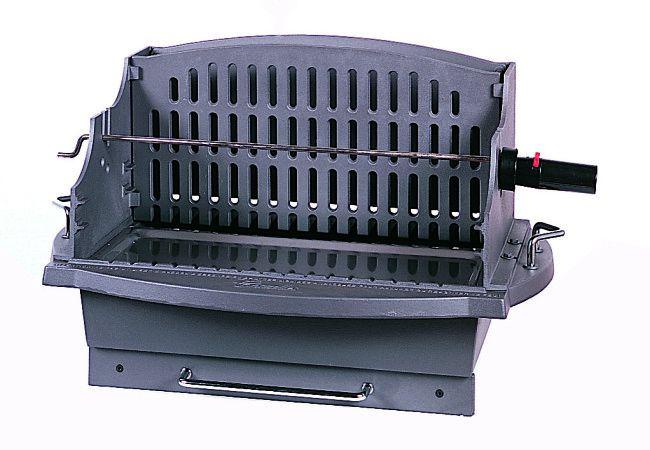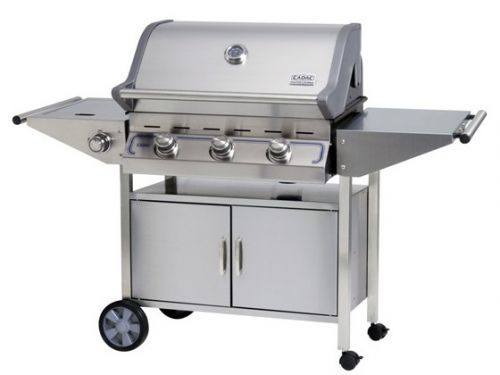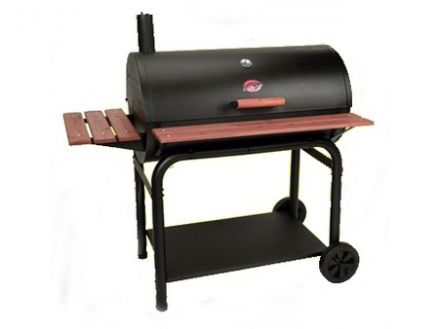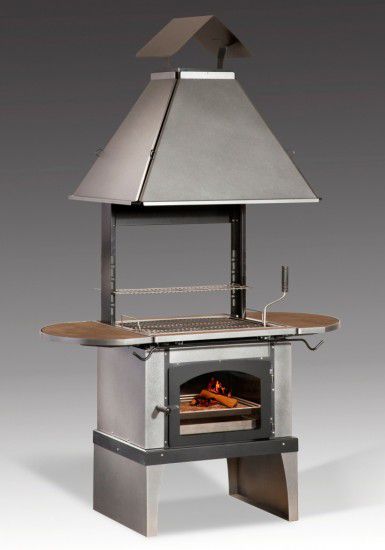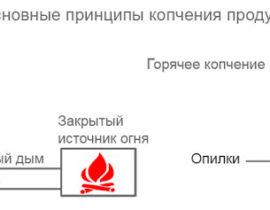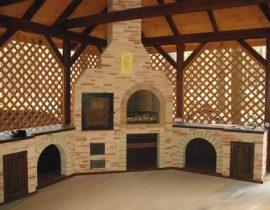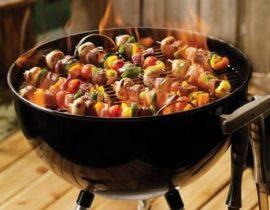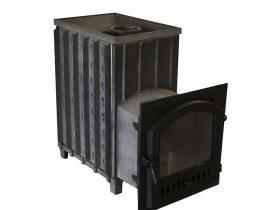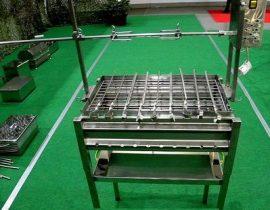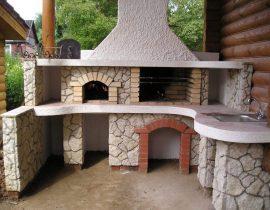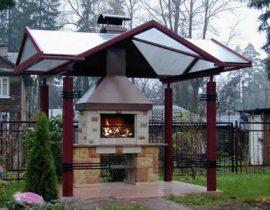A summer kitchen and a dacha are almost inconceivable without a grill and barbecue. The fragrant smell of grilled meat, fish and vegetables can drive any gourmet crazy. Today's market offers many varieties of grill and barbecue devices. As a rule, their working surface is made of cast iron, which creates the most optimal heating for cooking. Consider the main types of cast-iron barbecue grills, their advantages and disadvantages.
Content
Stationary cast iron grills and barbecues
The construction of such a device is usually carried out together with a country house. This is a serious stationary structure, which, like any construction, has its own stages.
Standard Design of Fixed Cast Iron Barbecue Grill
When creating a project for a stationary cast-iron barbecue grill, keep in mind that this structure cannot be moved and hidden. A stationary grill, like an ordinary house and a gazebo, has a concrete foundation base, its walls are laid out of refractory bricks and a canopy is usually placed above it, which protects the grill from atmospheric precipitation.
Thus, a stationary barbecue grill is more like a gazebo with a floor, walls and a roof, on the space of which a charcoal grill and a surface for frying meat, fish and vegetables are mounted. Also, such structures may have a built-in chimney with an exhaust system. Accordingly, during the construction of a closed gazebo, in which the flow of air from the outside will be limited, forced ventilation must also be provided.
A stationary cast-iron barbecue grill is a rather fire hazardous structure, therefore, during its construction, it is necessary to provide for simple fire safety rules:
- A gazebo with a barbecue or grill should be at a certain distance (usually at least five meters) from wooden buildings on your site or from objects prone to fire, including bushes.
- It is advisable to build the gazebo itself and its interior decoration from non-combustible materials, such as brick. Especially meticulously it is necessary to treat the insulation of the chimney and the material from which the floor will be made. If you nevertheless decide to make a wooden floor in the gazebo with a barbecue, then in the area immediately adjacent to the brazier it is necessary to place ceramic tiles or sheet iron on it.
The construction of a stationary barbecue grill is quite costly financially. But, nevertheless, this place can become the center of attraction for your entire country house, where noisy and cheerful companies will constantly gather. Stationary cast-iron grills can vary greatly in size, so if you wish, you can feed many guests at the same time.
Types of Cast Iron Barbecue Grills
Both stationary and mobile cast-iron barbecue grills can have various options for heating the working surface.
Gas Cast Iron BBQ Grill
In principle, the term "gas" in the name of a cast-iron barbecue grill refers exclusively to the method of heating the cast-iron surface of the grill. Such a device can be both stationary and portable. In the first case, it can be powered both from a stationary gas main and from portable cylinders.
Portable, mobile cast-iron gas barbecue grills are very popular. You can put this device anywhere in your area, and when the need has passed, put it back in the storage room.
A significant advantage of a gas-powered barbecue grill is the ability to fine-tune its heating. So you can get, like a well-fried steak with a crispy crust, and just warm up a cold dish. At the same time, the time to bring the gas barbecue grill into working condition is several tens of seconds and you do not have to conjure over kindling and inflating the coals. The absence of soot and soot in this version of the grill allows you not to pay much attention to its maintenance, only the grate will have to be cleaned and washed.
Depending on your preferences and the planned number of guests, you can purchase a cast-iron gas barbecue grill of any size: from a modest one for a couple of people, to a large one for a solid company.
As a rule, mobile gas barbecue grills can have a serving table and shelves in their design, where you can put cooking utensils.A gas barbecue grill, in addition to a working cast-iron surface, can also be equipped with a spit.
According to the principle of operation, gas grills are divided into two main types:
- In the first, a gas flame heats up lava - special stones,
- In the second type, the gas flame directly heats the working cast iron surface.
Electric Cast Iron BBQ Grills
Just like gas grills, electric barbecues can be stationary and mobile. However, the possibility of using mobile electric grills is limited by the availability of power for them.
Electric barbecues with a cast-iron surface can even be built into electric stoves located in ordinary apartments.
Barbecue grill with cast iron top on charcoal
The classic option for heating the working cast-iron surface of a barbecue grill is the gift coming from coals. Only in this case, the food cooked on it gets a special flavor of damka, which cannot be achieved when cooking on electric or gas devices.
The scope of imagination of manufacturers of such barbecue grills is extremely wide. They can be of various shapes. In the end, when building a stationary grill, you yourself can choose the shape of the brazier, its dimensions and depth and order an individual design of the cast-iron worktop.
A good option for self-construction of a barbecue grill is the ability to smoothly adjust the height of the working surface from embers.
In addition, one of the important elements in the construction of a barbecue grill is the installation of a heat-reflecting cover, which allows you to maintain a certain cooking temperature that is most suitable for a particular type of dish.
Also, the presence of a tightly closed roof will allow you to use your barbecue for smoking products. In this case, instead of a cast-iron work surface, a grate is placed in it, and a container of water is placed in the brazier. In this case, sawdust or wood chips from trees with fragrant wood, mainly fruit trees, are placed on burnt-out coals.
Video - cast iron barbecue grill review: advantages and disadvantages

